(Antwerp 1626–1679) Paradise landscape with the Creation of the Animals, bears signature and indistinct date: I. V. KESSEL. FECIT. 16.., oil on copper, 85 x 114 cm, framed We are grateful to Klaus Ertz for confirming the attribution of the present painting after examination of the original. He dates it into the late 1660s (the photocopy of a written certificate of 9 September 2016 is available). This lively and detailed representation of the Creation of Animals by Jan van Kessel I belongs to the tradition of the celebrated paradise landscapes of Jan Brueghel I and Jan Brueghel II. Their compositions reflected a growing scientific interest in nature that gradually developed in the late sixteenth and early seventeenth century, with publications such as Conrad Gessner’s Historia Animalium (1551–1558) and Ornithologiae by the Italian scholar Ulisse Aldrovandi (1599–1601). These sources grouped various species together according to their natural habitats, and the paintings relied on similar combinations of animals united within a single landscape setting. In the present painting, the viewer, positioned on a slightly elevated vantage point, looks at a wooded landscape populated by various species of animals throughout the foreground and middle ground. A river extends across the entire picture space. Its banks delineate individual tracts of land, with bays, promontories, and tributaries forming a web of compartments. In the left foreground, there are animals fighting, a boar storming into the picture, two hounds, a brown bear, a leopard, and two combating lions; two porcupines and an aquatic bird complement the animal population in the foreground. On the right-hand side behind them, separated by a river with large water birds resembling geese, appear a roebuck, a pair of pheasants, guinea pigs, and two penguins. This zone is delimited by a rosebush. A creek populated by swans and heron-like water birds forms a border to the middle ground, which provides the stage for the central scene illustrating the biblical theme: God the Father, surrounded by an aureole, is depicted standing in front of a dense deciduous forest, his hand raised in blessing, surrounded by the numerous animals he is believed to have created in the Christian religion. To his left, there is a fox, a horse, a cow, two reclining camels, an elephant, and a monkey; to his right, a dog, a lynx, a cat, two lamas, and a fantastic animal reminiscent of a camel. Opposite this central scene, on the other side of the river to its left, is a promontory populated by large birds. A hilly wooded landscape is recognisable in the distant background, with a reddish evening sky spreading above, bathing the scene in a soft, mysterious light. Jan van Kessel I was born in Antwerp in 1626 son to the painter Hieronymus van Kessel and Paschasia Brueghel, a daughter of Jan Brueghel I. At the age of eleven he was apprenticed to the animal painter Simon de Vos and is said to have subsequently studied under his uncle Jan Brueghel II, although there is no documentary proof of this. At the age of nineteen he was admitted to the Guild of Saint Luke in Antwerp, where he was registered as son of a master and painter of flowers. When he married Maria van Apshoven in 1647, his uncle David Teniers II was one of the witnesses. The latter had married Anna Brueghel, his mother’s stepsister, in 1637. Jan van Kessel I had thirteen children; two of his sons followed him as painters: Ferdinand and Jan II. In 1655 he purchased a house, and in 1670 he died in Antwerp. His portrait by Erasmus Quellinus was engraved by Alexander Voet Jan van Kessel I was one of the most important members of the renowned Brueghel dynasty of painters and can also be associated with them artistically. In his 2012 catalogue raisonné, Klaus Ertz listed 272 paintings and three oil sketches by him. It was possible to reconstruct large parts of his oeuvre thanks to the fact that van Kessel signed and dated many of his compositions. Natur
(Antwerp 1626–1679) Paradise landscape with the Creation of the Animals, bears signature and indistinct date: I. V. KESSEL. FECIT. 16.., oil on copper, 85 x 114 cm, framed We are grateful to Klaus Ertz for confirming the attribution of the present painting after examination of the original. He dates it into the late 1660s (the photocopy of a written certificate of 9 September 2016 is available). This lively and detailed representation of the Creation of Animals by Jan van Kessel I belongs to the tradition of the celebrated paradise landscapes of Jan Brueghel I and Jan Brueghel II. Their compositions reflected a growing scientific interest in nature that gradually developed in the late sixteenth and early seventeenth century, with publications such as Conrad Gessner’s Historia Animalium (1551–1558) and Ornithologiae by the Italian scholar Ulisse Aldrovandi (1599–1601). These sources grouped various species together according to their natural habitats, and the paintings relied on similar combinations of animals united within a single landscape setting. In the present painting, the viewer, positioned on a slightly elevated vantage point, looks at a wooded landscape populated by various species of animals throughout the foreground and middle ground. A river extends across the entire picture space. Its banks delineate individual tracts of land, with bays, promontories, and tributaries forming a web of compartments. In the left foreground, there are animals fighting, a boar storming into the picture, two hounds, a brown bear, a leopard, and two combating lions; two porcupines and an aquatic bird complement the animal population in the foreground. On the right-hand side behind them, separated by a river with large water birds resembling geese, appear a roebuck, a pair of pheasants, guinea pigs, and two penguins. This zone is delimited by a rosebush. A creek populated by swans and heron-like water birds forms a border to the middle ground, which provides the stage for the central scene illustrating the biblical theme: God the Father, surrounded by an aureole, is depicted standing in front of a dense deciduous forest, his hand raised in blessing, surrounded by the numerous animals he is believed to have created in the Christian religion. To his left, there is a fox, a horse, a cow, two reclining camels, an elephant, and a monkey; to his right, a dog, a lynx, a cat, two lamas, and a fantastic animal reminiscent of a camel. Opposite this central scene, on the other side of the river to its left, is a promontory populated by large birds. A hilly wooded landscape is recognisable in the distant background, with a reddish evening sky spreading above, bathing the scene in a soft, mysterious light. Jan van Kessel I was born in Antwerp in 1626 son to the painter Hieronymus van Kessel and Paschasia Brueghel, a daughter of Jan Brueghel I. At the age of eleven he was apprenticed to the animal painter Simon de Vos and is said to have subsequently studied under his uncle Jan Brueghel II, although there is no documentary proof of this. At the age of nineteen he was admitted to the Guild of Saint Luke in Antwerp, where he was registered as son of a master and painter of flowers. When he married Maria van Apshoven in 1647, his uncle David Teniers II was one of the witnesses. The latter had married Anna Brueghel, his mother’s stepsister, in 1637. Jan van Kessel I had thirteen children; two of his sons followed him as painters: Ferdinand and Jan II. In 1655 he purchased a house, and in 1670 he died in Antwerp. His portrait by Erasmus Quellinus was engraved by Alexander Voet Jan van Kessel I was one of the most important members of the renowned Brueghel dynasty of painters and can also be associated with them artistically. In his 2012 catalogue raisonné, Klaus Ertz listed 272 paintings and three oil sketches by him. It was possible to reconstruct large parts of his oeuvre thanks to the fact that van Kessel signed and dated many of his compositions. Natur
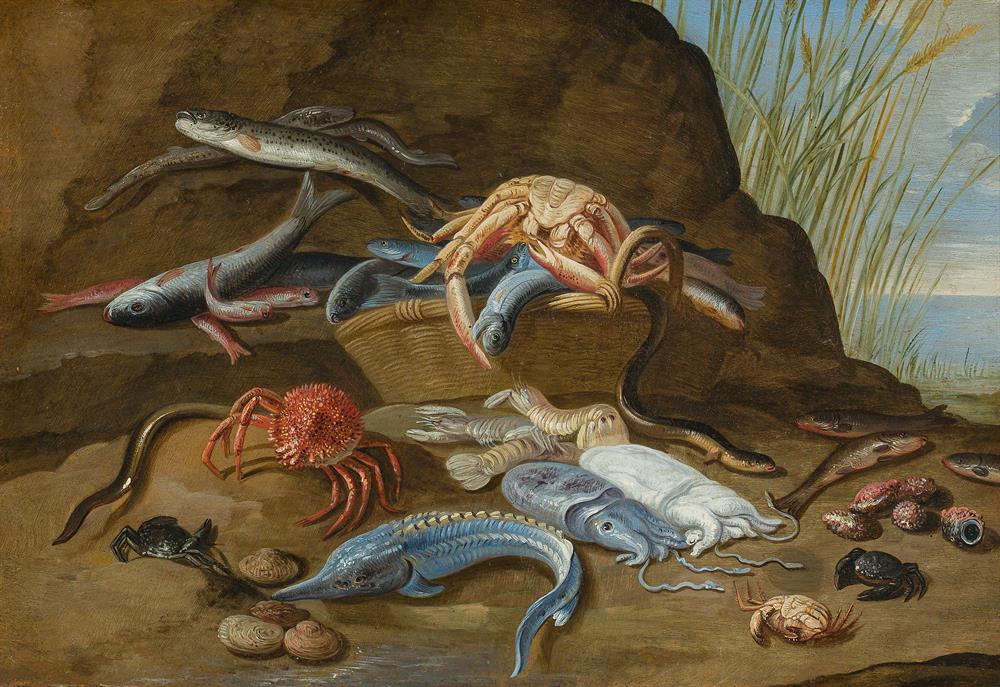
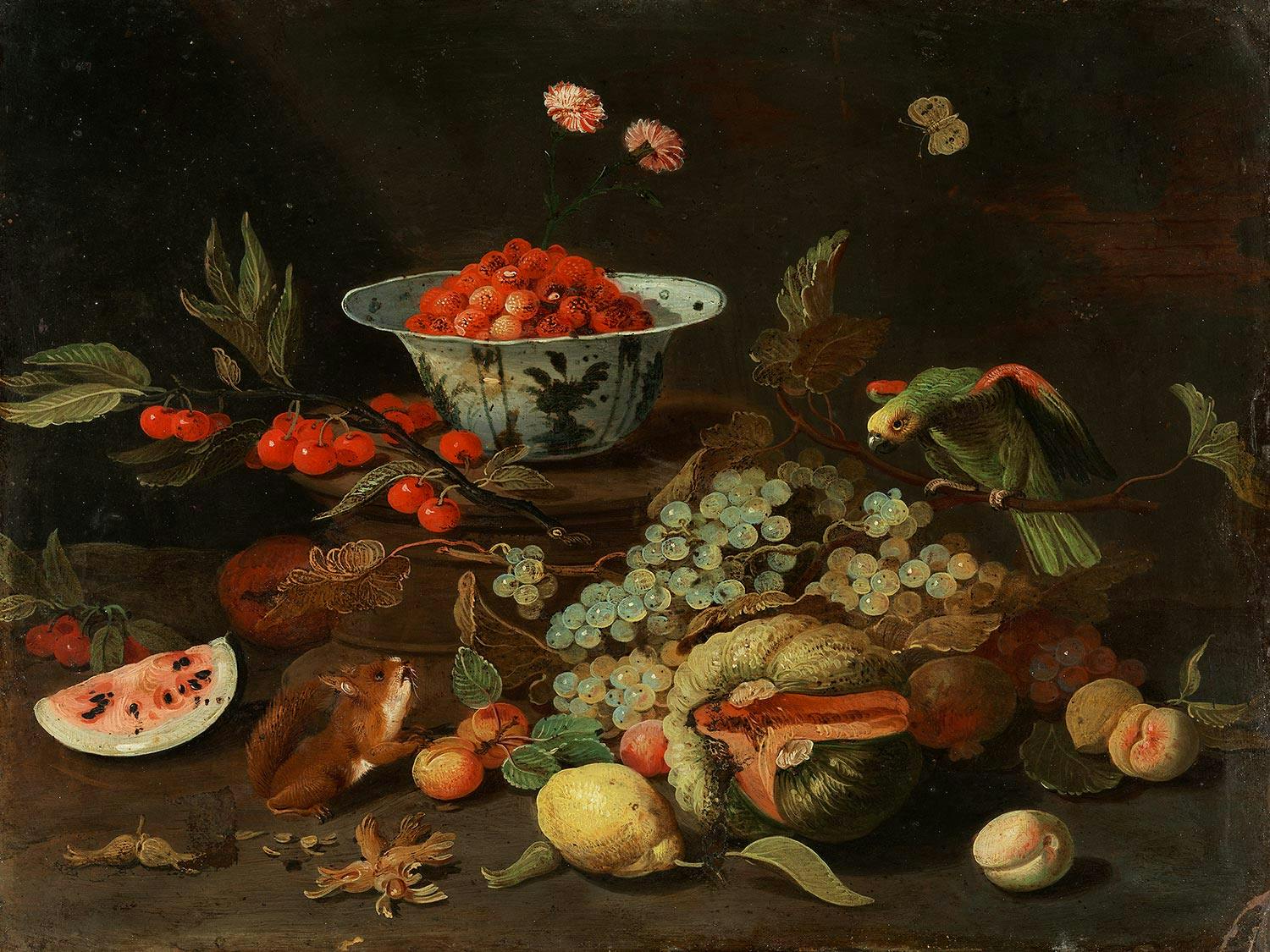


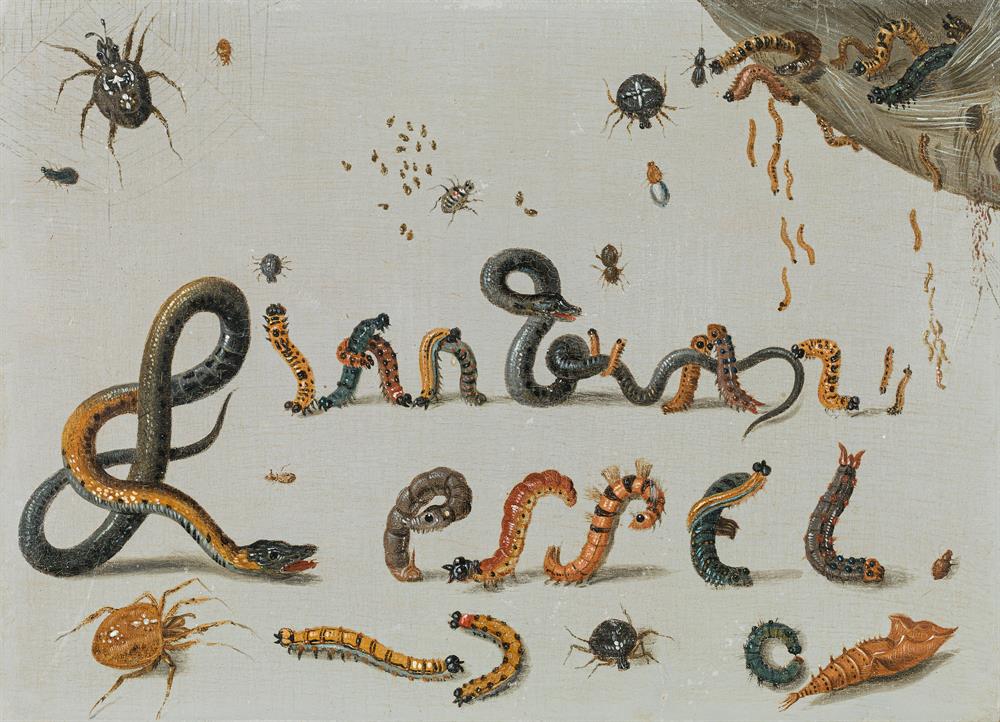

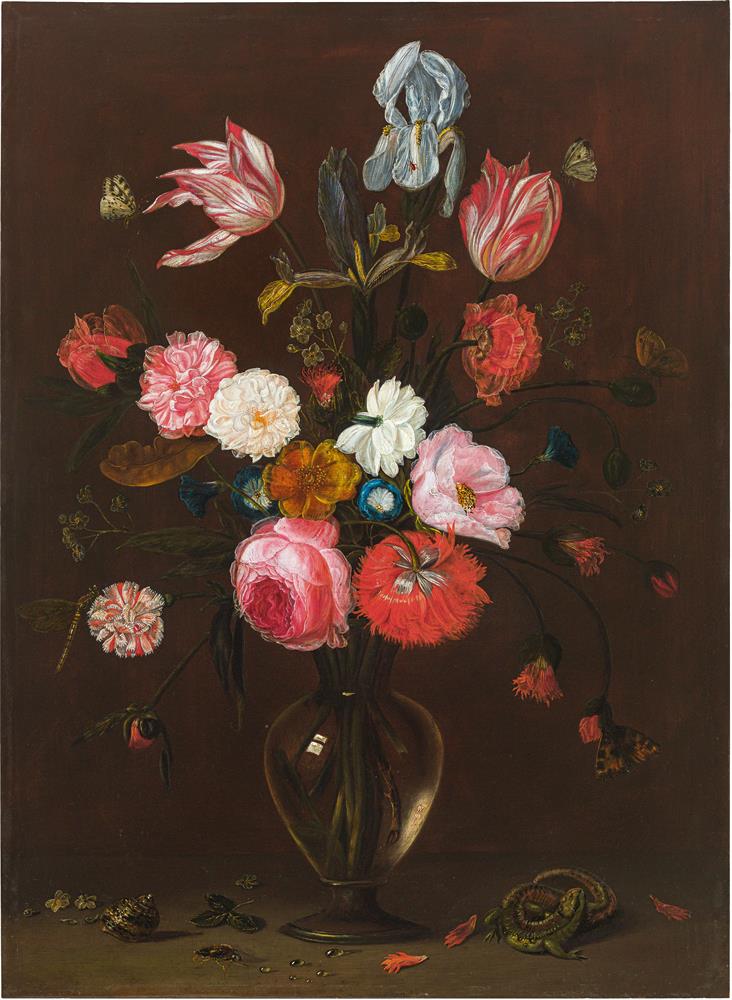

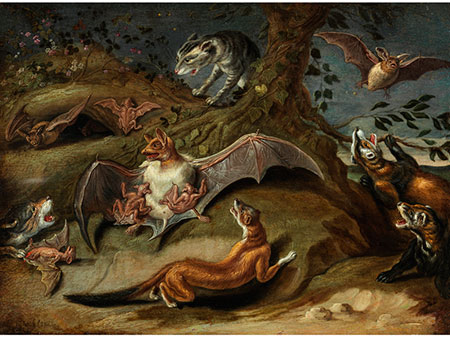


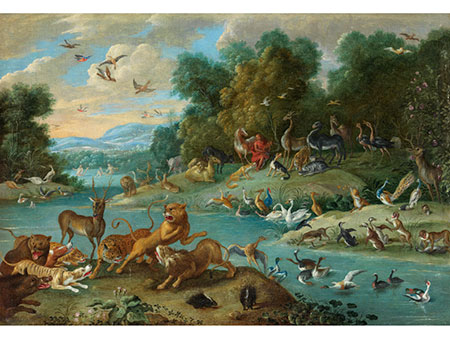

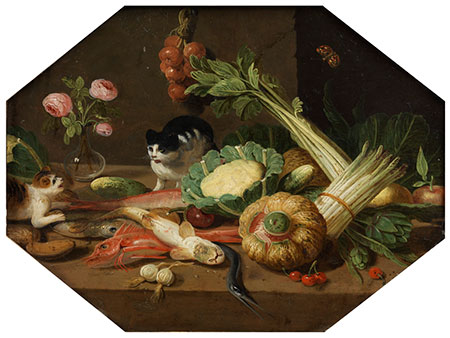
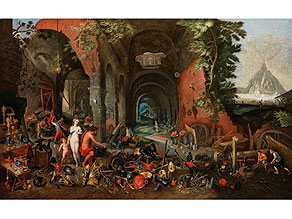
Try LotSearch and its premium features for 7 days - without any costs!
Be notified automatically about new items in upcoming auctions.
Create an alert